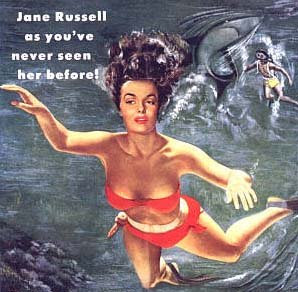
Back in the seventies and eighties, when films were bought by major TV networks, it was a big thing. Producers getting $4 million for the broadcast rights wasn’t unusual, and the movie was treated like a major TV event. Pay TV was still an expensive alternative, so most people still relied on antennas to get their signals.
Movies, like TV shows, were subject to a network’s Standard and Practices guidelines, and that usually meant snipping naughty bits so anyone could watch the film, shorn of profanity, nudity, violence, or religious epithets. Saying “Goddamn!” and “Hell!” were quite verboten.
I grew up quite used to that nonsense. In 1983, buying a movie on VHS (or
DiscoVision, or
CED) was cost prohibitive. Shogun, on VHS, was displayed in a glass case at Eaton’s, and if memory serves correct, the set was somewhere around $100-200 for the whole thing. A blank T-120 tape cost anywhere from $36-32.
Seriously.
And yet, after much nagging, I was able to convince Dad to buy a VCR. The RCA Selectavision machine was around $1700, but we got a deal for an RCA 14” TV as well (just under $500) – the first colour TV we ever had. I distinctly recall seeing a
Magnavox laserdisc player for over $2,000.
$2,000+ for a laserdisc player.
The VCR meant you could tape and actually own a copy of whatever TV signal you got, and although my first 14-15 years involved a dinky Admiral black & white television, WE HAD CABLE TV.
No, you don’t understand. WE HAD CABLE TV.
It was a window into movieland, and before garbage paid programming littered airwaves at night, and garbage talk shows cluttered up the afternoon schedules, TV stations aired movies.
Whether during prime time or daytime, there were movies, and many were preceded by this “Edited for Television.”
That disclaimer was even applied to From Russia with Love, a 1965 James Bond film that U.S. and Canucklehead S&P censors felt was too risqué. The edits left over from the chopped footage were sloppy, and you always knew something wasn’t right when a strange word uttered by an actor didn’t match the lips. (For a period piece on the snipping of films, check out this 1971 article in TIME magazine
HERE.)
That was the kind of roadblock director John Carpenter and producer Debra Hill faced in order to sell Halloween to NBC for $4 million. If the proposed trims were applied, the film would’ve run shorter than desired, so Carpenter and Hill wrote a handful of new scenes designed to fill out the film’s PG-styled edit, and give NBC enough room to lard the movie with ads.
Major films are no longer aired as often or treated as an event on network TV anymore. VHS, DVD, and Pay TV killed it, and that loss also signaled an end to shooting filler scenes for network airings. Sometimes the new footage – material not in the theatrical cut – was comprised of genuine outtakes and deleted scenes, but there were examples when a lot of footage was shot, probably with an eye towards a TV sale.
Classic examples include Superman, The Deep, Two-Minute Warning, Earthquake, The Towering Inferno, Beyond the Poseidon Adventure, Waterworld, and Far and Away. Waterworld has just been released in an expanded DVD release, the extra footage from Towering Inferno is on the DVD, and some of the Superman material is also on disc. But as for the rest, nuh-uh.
The inclusion or re-editing of a movie with extra footage, when it happens on DVD, does give viewers the chance to see whether the movie still works, and that’s more or less the main question we try and answer in our review of Anchor Bay’s extended edit of Halloween.
We’ve also uploaded reviews of
Halloween II and
Halloween III: Season of the Witch (both produced by Dino De Laurentiis and released by Universal) to compare the changes and sharp turns that affected the franchise’s early installments.
Coming shortly will be reviews of Halloween IV and V, although I have to admit I am getting tired of the theme music, something at least the poopy Halloween III didn’t have in its score.
Coming next: soundtracks reviews, Cult Epics’ new 2-disc edition of Slogan, another rare work featuring Serge Gainsbourg-Jane Birkin, and more installments in the Halloween series.
- MRH
Visit KQEK.com’s Main Page
HERE!
Technorati Tags:
DVD Reviews
 Two quick soundtrack additions between a saturation of Michael Myers:
Two quick soundtrack additions between a saturation of Michael Myers:









 Quarantine
Quarantine






